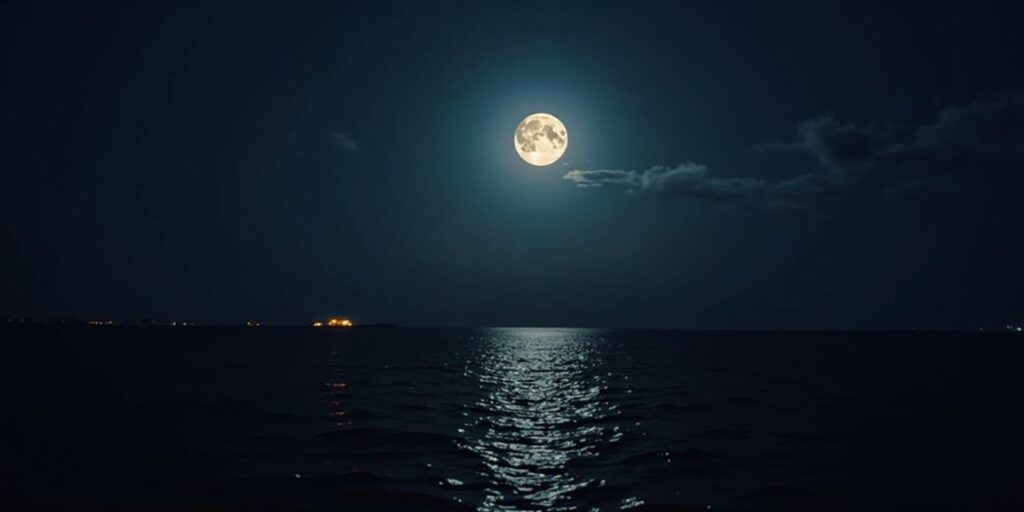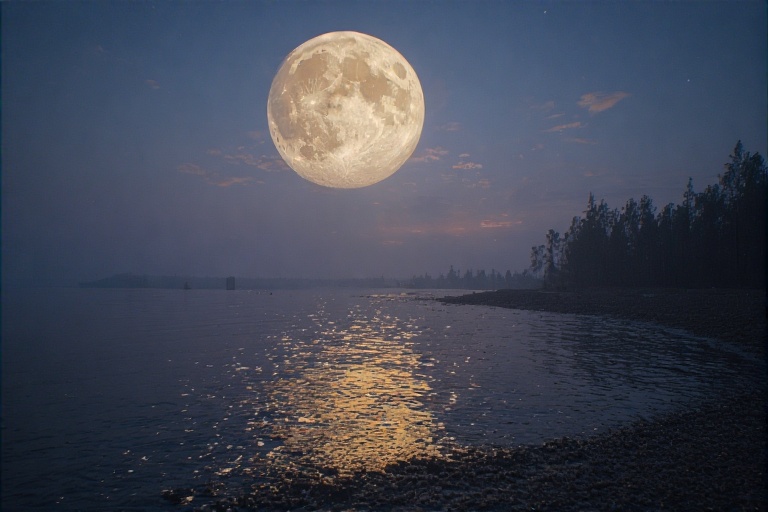
🌕 Full Moon Countdown
🌙 Full Moon Names & Dates (2025)
July 10
August 9
September 7
October 6
November 5
December 4
How many days until Full moon 2025? Dates, Supermoons, Eclipses, and Lunar Facts
How Many Days Until the Full Moon 2025? Complete Guide to Full Moon Dates and Lunar Events
When To See the Next Full Moon – For eons the full moon has held humanity in its grip. In 2025 that grip tightens as skywatchers will see 12 full moons which include 3 supermoons and 2 lunar eclipses, and also which will catch a few partial solar eclipses. If you are an amateur astronomer, a nature lover, or by the moon’s enigmatic light which draws you in, this all inclusive 2025 full moon guide is for you.
Let’s go through the full moon dates out this year, moon phase science, folklore, eclipses and how you can best take advantage of each lunar phase.
📅 2025 Full Moon Dates: When to See Each Full Moon in 2025
Each full moon also has its own name which is usually from Native American, colonial, or cultural background. Here are the full moon dates for 2025 with exact timing in U.S. Eastern Time and GMT:
| Date | Name | Eastern Time | GMT |
|---|---|---|---|
| January 13 | Wolf Moon | 5:23 PM | |
| February 12 | Snow Moon | 8:53 PM | 13:53 |
| March 14 | Worm Moon | 2:05 AM | |
| April 12 | Pink Moon | 12:22 AM | |
| May 12 | Flower Moon | 12:04 PM | 16:56 |
| June 11 | Strawberry Moon | 3:04 AM | 07:44 |
| July 10 | Buck Moon | 4:37 PM | |
| August 9 | Sturgeon Moon | 3:05 AM | 07:55 |
| September 7 | Corn Moon | 2:21 AM | |
| October 6 | Harvest Moon | 11:48 PM (Oct 7) | 03:48 |
| November 5 | Beaver Moon | 8:06 AM | |
| December 4 | Cold Moon | 6:14 PM | 23:14 |
🔭 Note: During the nights before and after its peak the moon is full.
🌕 What Is a Full Moon? Understanding Full Moon Science and Syzygy

At full moon the Earth is between the Sun and the Moon which in turn causes the Moon’s face to be fully lit. This perfect alignment which is what syzygy means causes the moon to reach its brightest in the night sky.
While usually we report that the moon is “full” for a day or so it in fact only is at its full size for a brief second. But what we see as several nights of a full moon is in fact the gradual illumination of the moon’s surface.
🔬 Moon Phases Explained: The Full Moon and Its Cycle
There are four stages of the moon:
- New Moon: The moon is between Earth and Sun.
- First Quarter: Half of the moon is visible.
- Full Moon: The whole face of the moon is lit.
- Third Quarter: Only the opposite half is visible.
Intermediate phases include:
- Waxing Crescent
- Waxing Gibbous
- Waning Gibbous
- Waning Crescent
The moon goes through its full cycle in about 29.5 days which means we see 12 full moons each year.
Why Do We Always See the Same Side of the Full Moon?
The Moon has a rotation called tidal locking with that of the Earth; as it completes one turn on its axis the same amount of time that it takes to go around the Earth — 27.3 days. Because of this, we always see the same side known as the near side.
Due to lunar libration we are able to see up to 59% of the moon’s surface!
🌎 Full Moon Names and Seasons From Different Hemispheres
In the Southern Hemisphere the full moon names differ because the seasons are reversed. For example:
- March: Harvest Time
- June: Frozen Moon
- December: June Moon
This seasonal approach is central to lunar-based traditions worldwide.
Full Moon Cultural Names: Native American, Colonial, and Chinese Traditions

Native American & Colonial Full Moon Names
- January: Howling Moon
- February: Silver Moon
- March: Moon of February
- April: Pink Time
- May: Flower Moon Night
- June: June Moon
- July: Wolf Moon
- August: Full Moon in August
- September: Silver Moon
- October: Garden of Time
- November: Raccoon Moon
- December: Cool Moon
Chinese Lunar Full Moon Names
- January: Vacation Moon
- May: Phoenix Sun
- July: Ghoul Moon
- December: Bitter Sun
These names mark the seasons and cultural festivals.
🌕 Supermoon vs. Micromoon: What’s the Difference?
When at its closest approach to Earth (perigee), a full moon is called a supermoon. It appears up to 14% larger and 30% brighter than the average moon.
At its furthest point (apogee) we have a micromoon.
Supermoons in 2025
- October 6 (Harvest Moon)
- November 5 (Beaver Moon)
- December 4 (Cold Moon)
Don’t miss these chances to see the moon at its best!
Full Moon and Lunar Eclipses in 2025
Each time we see a full moon, a lunar eclipse may occur. In 2025, two total lunar eclipses will be visible:
- March 14: Lunar Total Eclipse — visible throughout the Americas with a “Blood Moon” effect.
- September 7: Full Lunar Eclipse — best seen in Asia and Australia as the moon passes into Earth’s shadow.
☀️ Solar Eclipses in 2025: Partial Eclipses to Watch
In 2025, two partial solar eclipses will occur (not related to full moons):
- March 29
- September 21
These happen when the new moon blocks part of the sun.
Oceanic Impact of the Full Moon: Tides and Nature
When the full moon is closest to the sun, it causes:
- Higher high tides (spring tides)
- Lower low tides
Supermoons cause extreme tidal changes impacting animals, plants, and even human sleep.
How to Observe the Full Moon: Tips for Stargazers and Photographers
Naked Eye Observation
- Best on clear nights
- Watch the moonrise or moonset on the horizon
Using a Telescope
- View craters, maria, and the terminator (shadow edge)
Photography Tips
- Use a tripod
- ISO 100–200
- Shutter speed: ~1/125 for bright full moons
Spiritual and Religious Significance of the Full Moon
The full moon plays a key role in many spiritual calendars:
- Easter: First Sunday after the vernal equinox following the full moon
- Buddhist Vesak in May
Folklore links the full moon to werewolves, madness, and heightened emotion, adding to its mysterious allure.
When Is the Next Full Moon?
- Date: August 9, 2025
- Time: 3:05 AM EDT / 7:55 PM GMT
- Name: Sturgeon Moon
🎯 Fun Full Moon Facts
- Diameter: 3,474 km (~1/4 size of Earth)
- Distance: Moves about 3.8 cm away from Earth each year
- Blue Moon: Term used for the second full moon in a calendar month
Understanding the Full Moon Cycle After the Peak
After the full moon, the lunar cycle continues through waning phases:
- Waning Gibbous (slightly shrinking)
- Third Quarter (half visible)
- Waning Crescent (last phase before new moon)
Frequently Asked Questions About the Full Moon
1. When will the next full moon be?
The next full moon will be the Buck Moon on August 9th.
2. What comes after the Full Moon phase?
After the full moon the moon begins to wane which is the beginning of the waning gibbous phase. What this means is the illuminated part of the moon which we see is reducing each night. The phases go like this
- Waning Gibbous: After the full moon, of what remains, most but not all.
- Last Quarter: Moon is half illuminated but on the other side from the first quarter.
- Waning Crescent: Less than 50% illumination, waning to new moon.
- New Moon: No light visible, moon is in between Earth and Sun..
This is due to the fact that lunar cycle has an average of 29.53 days while calendar months are not flexi (28 to 31 days’ duration). At times a month will see two full moons which in that case we call the second one a Blue Moon which is also not a very common thing and happens about every 2.5 to 3 years.
3. Blue Moon Meaning: Blue Sky of Meaning:
In the past the phrase “once in a Blue Moon” was used to note how rare this event is.
Blue Moons are considered special and lucky in folklore and some present day spiritual groups see them as a time for reflection or renewal.
4. Which day is the Full Harvest Moon?
At the time of the Autumnal Equinox we see The Harvest Moon which gives farmers an extra hour of daylight to bring in their crops in early fall.
In 2025 the Harvest Moon will be on September 21, 2025.
It is that which is very large and bright at a low position near the horizon for a few nights.
5. Why do we have 13 full moons this year?
A lunar year which is 12 lunar cycles of is about 354 days, which is to say that it is almost 11 days shorter than the solar calendar year. Out which the extra days add up over time we also see at times the appearance of a 13th full moon in a calendar year.
6. Is the next full moon the Snow Moon?
No, the next full moon is not the Snow Moon. The Snow Moon is the name given to the full moon in February, and the next full moon will be the Buck Moon in July. The full Snow Moon occurred in February of this year, on the 12th. The Buck Moon will be on July 10th, 2025.
7. Which month has no full moon?
While it is normal for each calendar month to have at in which there is a full moon, very rare is the instance when February may see no full moon when the timing of the lunar cycle places the full moons at the start of January and the end of March. This is what we call a “Black Moon” event.
It is a rare occurrence which will not take place in 2025.
8. What date is the Full Hunter’s Moon?
The full moon which follows the Harvest Moon is what we know as The Hunter’s Moon. In 2025 it will be:
October 20, 2025
Named to the hunting season which goes into the winter
9. What is that red color of the moon today?
A blood moon which is what we see when there is a total lunar eclipse in which Earth’s shadow plays over the moon. The red color is a result of sunlight which passes through the Earth’s atmosphere and into the moon’s view, which we perceive as a “blood red” glow. This is what we call a Blood Moon.
At also which time the moon is low on the horizon it is when dust, pollution or smoke in the air step in to scatter blue light which in turn presents the moon in a red or orange tone.
10. When is the Strawberry Moon to occur?
In June we see the Strawberry Moon which marks also the start of the strawberry harvest season in North America.
10 PM EDT (June 11 02:10 UTC).
11. Is the moon at full at night?
Yes, the full moon at sunset and sets at sunrise which means it is out all night, weather permitting.
12. What is the full moon?
Culturally and spiritually, full moons symbolize: In culture and spirit, full moons represent:
- Completion and fulfillment
- Heightened emotions and intuition
- Time to release and reflect
At full moon.
13. What’s up during a full moon?
The Earth facing side of the moon is full which it appears as a large bright disk in the night sky.
14. What Is the August Full Moon Called?
August’s full moon, often called the Sturgeon Moon, is on its way.
15. What Type of Moon Is in August?
In August, the full moon is called the Sturgeon Moon.
16. Is August the Strawberry Moon?
No, the Strawberry Moon is the name for the full moon in June, not August.
17. What Is the Next Full Moon Called?
The next full moon is the Sturgeon Moon (August 9th, 2025)
18. What Is the Date of the Full Moon in August?
It will occur on August 9th. It will reach its peak at 3:05 a.m.
19. What Is the Energy of the August Full Moon?
The Flower Moon energy relates to growth, blossoming, fertility, and renewal.
References
- NASA Moon Phases and Eclipses
- Time and Date: Full Moon 2025 Dates
- Farmer’s Almanac: Full Moon Names
- National Geographic: Why the Moon Appears Red
- Royal Museums Greenwich: Lunar Cycles Explained
Please Visit for more News: WhyTrends

